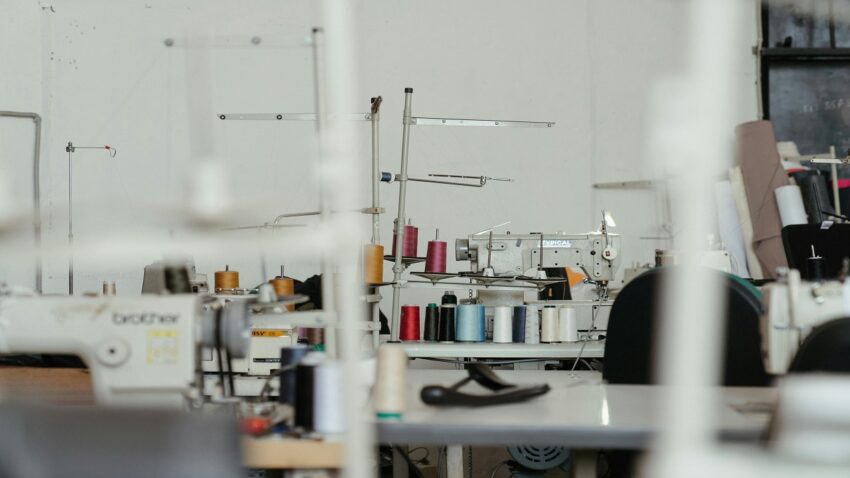Introduction
The apparel & garments industry is evolving rapidly, driven by shifting consumer demands, technological innovation, and global competition. For manufacturers, staying ahead means embracing new strategies that enhance efficiency, quality, and brand reputation. Whether you’re a seasoned producer or a startup, leveraging proven tactics can help your business thrive in this dynamic landscape. This article explores seven powerful strategies that can elevate your apparel manufacturing operations, from integrating cutting-edge technology to optimizing your supply chain and building lasting brand authority.
Apparel Manufacturing Trends Shaping 2025
The apparel sector is experiencing a transformation as sustainability, digitalization, and customization become central to production. Consumers are increasingly seeking eco-friendly products and transparent supply chains, prompting manufacturers to adopt greener practices and digital solutions. The rise of on-demand production and personalized fashion is also reshaping traditional manufacturing models, requiring agility and innovation. Staying informed about these trends enables manufacturers to anticipate market shifts and adapt proactively, ensuring long-term competitiveness in a crowded marketplace.
Apparel & Garments: The Role of Technology in Modern Production
Technology is revolutionizing apparel manufacturing, streamlining processes and opening new possibilities for product development. Advanced machinery, digital design tools, and data analytics are enabling manufacturers to reduce lead times, minimize waste, and respond swiftly to market trends. The integration of Industry 4.0 concepts such as the Internet of Things (IoT) and artificial intelligence allows for real-time monitoring and predictive maintenance, further boosting operational efficiency. Embracing these technological advances is essential for companies aiming to deliver high-quality garments at scale.
Automation and Sustainability in Apparel Manufacturing
Automation is a game-changer for apparel manufacturers, enhancing productivity while reducing labor costs and errors. Automated cutting, sewing, and finishing systems not only accelerate production but also improve consistency and precision. Alongside automation, sustainability initiatives like water-saving dyeing processes and recycled materials are gaining traction. Manufacturers who invest in sustainable automation can meet regulatory requirements and appeal to eco-conscious consumers, strengthening their market position and brand value.
Quality Control: Meeting Global Standards
Maintaining rigorous quality control is non-negotiable in today’s competitive apparel market. Implementing standardized inspection protocols and leveraging digital tracking systems ensures that every garment meets or exceeds customer expectations. Quality assurance extends beyond the factory floor, encompassing supplier audits and compliance with international certifications. By prioritizing quality, manufacturers can reduce returns, enhance customer satisfaction, and build a reputation for reliability a key differentiator in both domestic and global markets.
Apparel Supply Chain Optimization for Competitive Advantage
An optimized supply chain is fundamental to apparel manufacturing success. Efficient logistics, transparent sourcing, and responsive inventory management enable manufacturers to deliver products on time and at the right cost. Digital supply chain platforms provide end-to-end visibility, facilitating better decision-making and risk mitigation. Companies that invest in supply chain optimization are better equipped to handle disruptions, scale operations, and seize new business opportunities.
Sourcing Raw Materials Efficiently
Sourcing high-quality raw materials is the foundation of superior garment production. Building strong relationships with reliable suppliers ensures consistent quality and timely deliveries. Manufacturers are increasingly turning to digital sourcing platforms to compare prices, assess supplier credentials, and negotiate favorable terms. Sustainable sourcing such as using organic cotton or recycled fibers—not only supports environmental goals but also resonates with conscious consumers, adding value to the final product.
Logistics and the Importance of Reliable Partners
Efficient logistics are essential for meeting tight production deadlines and minimizing costs. Partnering with experienced logistics providers ensures smooth transportation of raw materials and finished goods, both domestically and internationally. Advanced tracking systems and real-time data sharing enhance transparency and allow manufacturers to anticipate and resolve issues promptly. In some regions, working with a specialized partner—such as a precast contractor milwaukee Wisconsin can streamline the construction of new facilities or expansions, supporting business growth.
Building Brand Authority in Apparel & Garments
Establishing brand authority is crucial for attracting customers and standing out in a crowded market. Manufacturers can build credibility by sharing their expertise through educational content, case studies, and participation in industry events. Highlighting certifications, awards, and customer testimonials further strengthens trust. A robust digital presence, including an optimized website and active social media channels, ensures that potential buyers can easily discover and engage with your brand.
Conclusion: The Future of Apparel Manufacturing
The future of apparel manufacturing is defined by innovation, sustainability, and adaptability. By adopting advanced technologies, optimizing supply chains, and prioritizing quality, manufacturers can position themselves for sustained growth and success. As consumer expectations continue to evolve, companies that embrace change and invest in continuous improvement will lead the way in the competitive world of apparel & garments.

